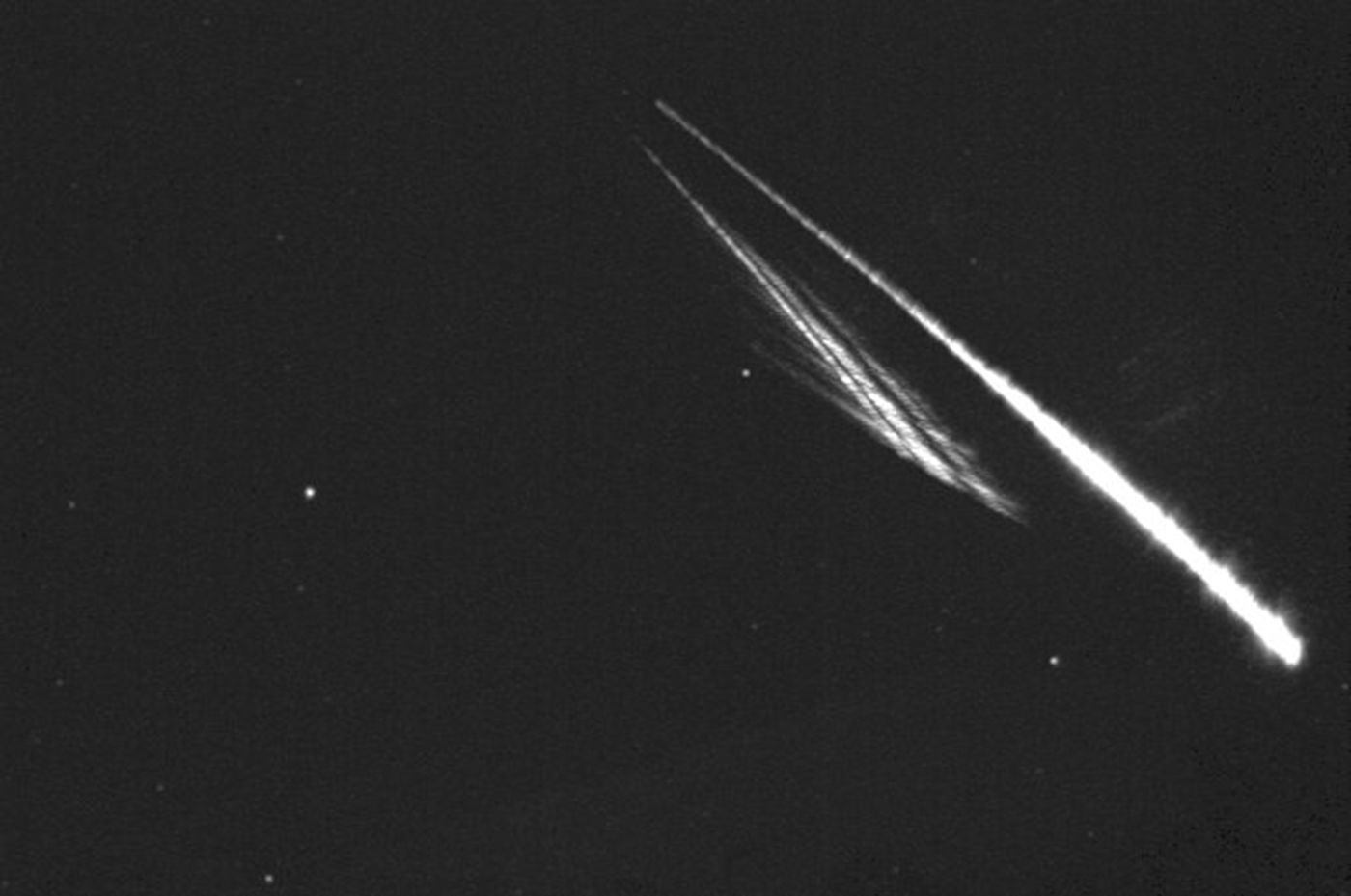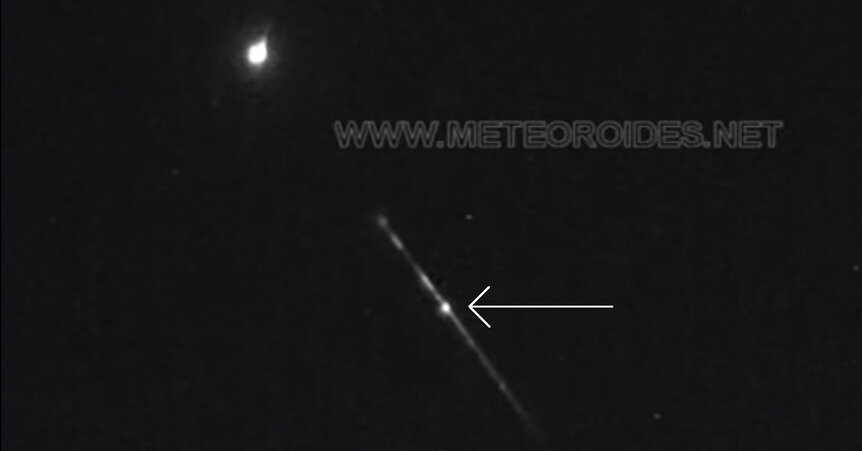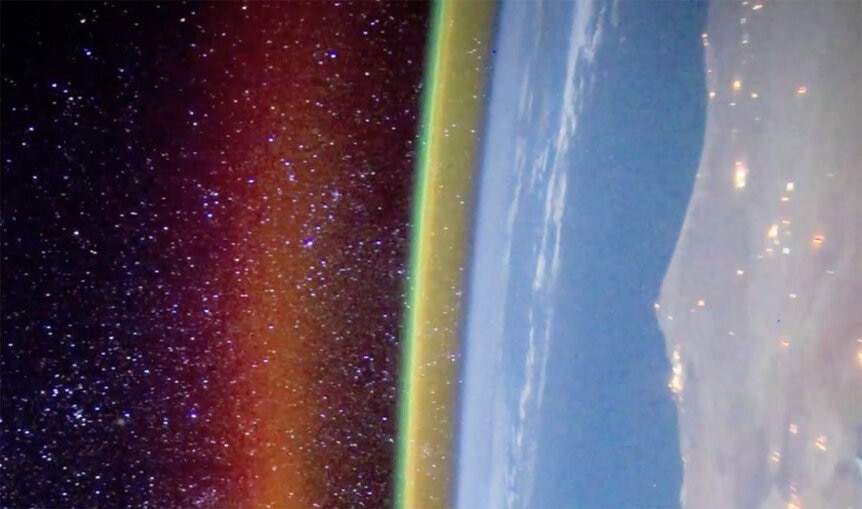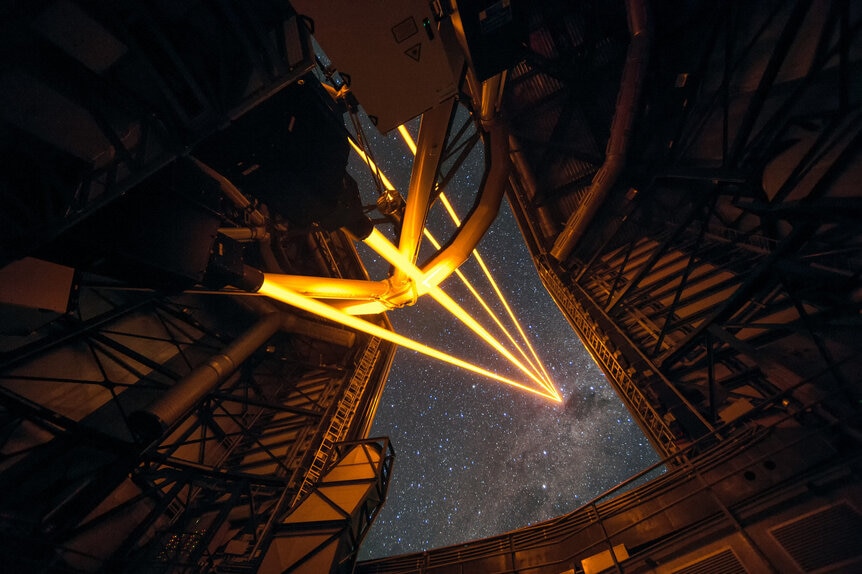Create a free profile to get unlimited access to exclusive videos, sweepstakes, and more!
A bright, sodium-laced fireball over Spain

On 22 February 2020, at 23:22 UTC, a bright, slow fireball dropped out of the Spanish sky. We use the term fireball for exceptionally bright meteors, and this one glowed at magnitude -9 — a hundred times brighter than Venus! That must have been quite a sight.
A lot of people did see it, in fact, and it was also caught on cameras as part of the SMART network: Spectroscopy of Meteoroids in the Atmosphere with Robotic Technologies. These are automated cameras in Spain pointed skyward specifically to catch bright meteors and triangulate on their 3D trajectories. The principal investigator of SMART, Dr. Jose M. Madiedo, analyzed the data and was able to find out quite a bit about the rock that burned up.
It entered the atmosphere at 43,000 kilometers per hour (about 12 km/sec, which is pretty slow for a meteoroid) and started to glow when it was about 70 km up, burning up completely over the Mediterranean Sea when it was still 29 km above the ground. Backtracking the path it took into space, he was able to determine the orbit of the object was similar to that of asteroids.
When I saw this on Twitter via the MeteorNews feed, I didn't know much about SMART, but as soon as I saw this video I got excited:
This shows the fireball from a couple of different cameras and locations (including, cleverly, the constellations marked at the end of the video). I laughed when I watched; at first it looks like the meteor is entering from the top center, but that's not it at all! A few seconds later the actual meteor enters the frame. For a moment I thought it was a reflection inside the camera (common for bright objects) but then I realized the SMART network does something even more: It takes real-time spectra of the meteors.
That's where you break up the light of an object into individual colors (wavelengths), sometimes into very fine bins of thousands of colors. Different atoms and molecules glow at characteristic wavelengths, so by examining the spectrum of an object you can tell what's in it.
That's what you first see in that Spain fireball video; not the meteor itself but the spectrum of it! The light is dispersed along a line on either side of the meteor itself, and the different "lines" (the specific colors in the spectrum) can be seen as the meteor brightens.
I was curious about the spectrum, so I contacted Dr. Madiedo, and he told me that the brightest feature, the one you see first, is from sodium. That’s a little surprising; if this is a rocky bit from an asteroid I’d expect to see something more like carbon or silicon.
But it turns out that abundance of an element is not the only thing that makes it bright in a spectrum. Meteoroids like this don't have a lot of sodium in them, but sodium glows very vigorously and at lower temperatures than other elements. In fact, with meteors, it's usually the first element seen in spectra, when the solid bit of rock first starts to heat up. Other elements need higher temperatures before they glow, which is why later on you see more lines start to appear. This has been known for a long time, and is called — and I love this — differential elemental ablation (ablation is when the material on the meteoroid starts to melt and blow off due to the high pressure of ramming through Earth’s air).
Sometimes, meteors leave material behind them that glows for some time. Called a persistent train, the glow is mostly from sodium as well (though it's also due to it interacting with ozone high in the atmosphere; the entire story is a bit complicated but very cool).
There's also a phenomenon called airglow, seen only in very dark skies, where the sky itself appears to glow. Some of that is from sodium in the upper atmosphere, roughly 70 km up, glowing after sunset. That sodium actually comes from meteors! A hundred tons or so of meteoroids burn up in our atmosphere every day, and a tiny bit of that is sodium, which can stay suspended for quite some time. Energized by sunlight during the day, it releases that energy at night as a soft yellow glow.
Although you might think that irritates astronomers, it's actually useful. Our atmosphere moves around a lot, distorting astronomical images. Astronomers can compensate for that using a technology called adaptive optics. They create artificial stars in the sky using lasers that excite those sodium atoms, creating a bright spot in the sky. As the atmosphere moves that artificial star distorts; sophisticated computers measure that distortion through a telescope and then actuate pistons under a telescopes mirrors to deform it, literally changing the shape of the mirror to compensate for the atmospheric distortion. This can sharpen images considerably, even getting better resolution than Hubble Space Telescope!
So how about that? We can study meteors burning up in our atmosphere by studying their sodium, and then use that sodium to help us observe other objects, too. There's a touch of poetry to that, I think.





























